schooly
A tool to help children with poor financial background get access to free quality education.
Role:
UX designer designing the app Truckato from conception to delivery.
Project Duration:
August 2021 – November 2021
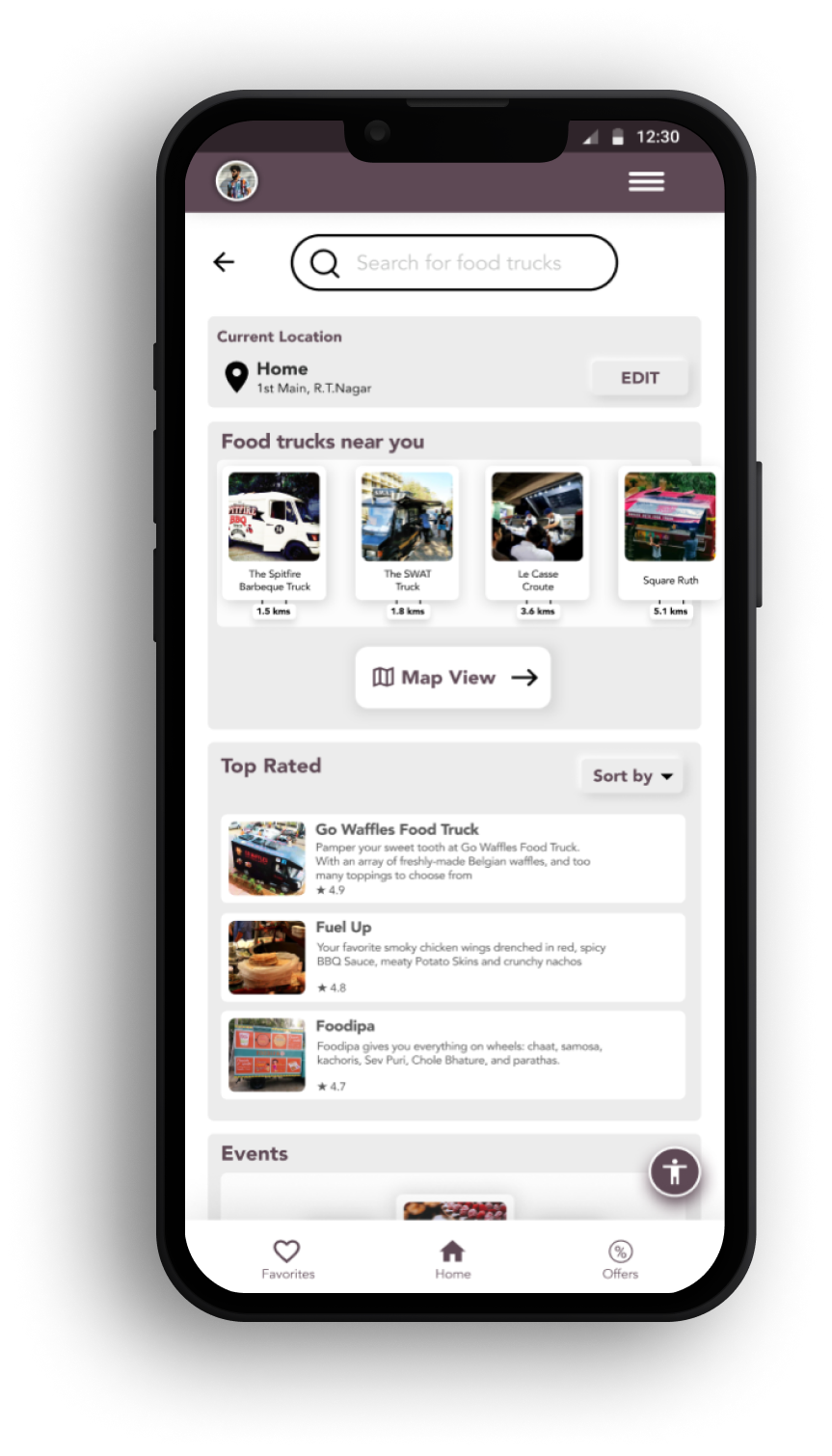
PROBLEM STATEMENT
In a metropolitan city like Bangalore, many food trucks are little-known to people as there is not much online visibility, due to which people aren’t aware of the food truck locations and at what time they would be open. Busy people who do visit the food trucks do not like to wait in the long queue after placing an order.
BACKGROUND
Hypothesis
A one-stop website that allows people to find and view cooking tutorials will help encourage people living independently to learn cooking and cook healthy food for themselves.
Why?
A tool that determines the accurate location of food trucks in the city, provides quick information about them and has an option to place an order for pickup will help people gain more knowledge about food trucks, save their time and also popularize food truck culture.
The food trucks in many cities of India serve in fixed/flexible locations and irregular serving hours. Few people try to remember their serving hours and location and visit them occasionaly. However most of them find it difficult to remember the details. Also, many busy working adults who visit the food truck find it frustrating to wait in long queues to place an order.
THE PRODUCT
Truckato is an app to locate nearby food trucks and place an order for pickup. In a metropolitan city like Bangalore, many food trucks are less known to people as there is not much online visibility. Truckato targets customers like commuters, workers and millennials who would love to stop en route and have/pickup the food.
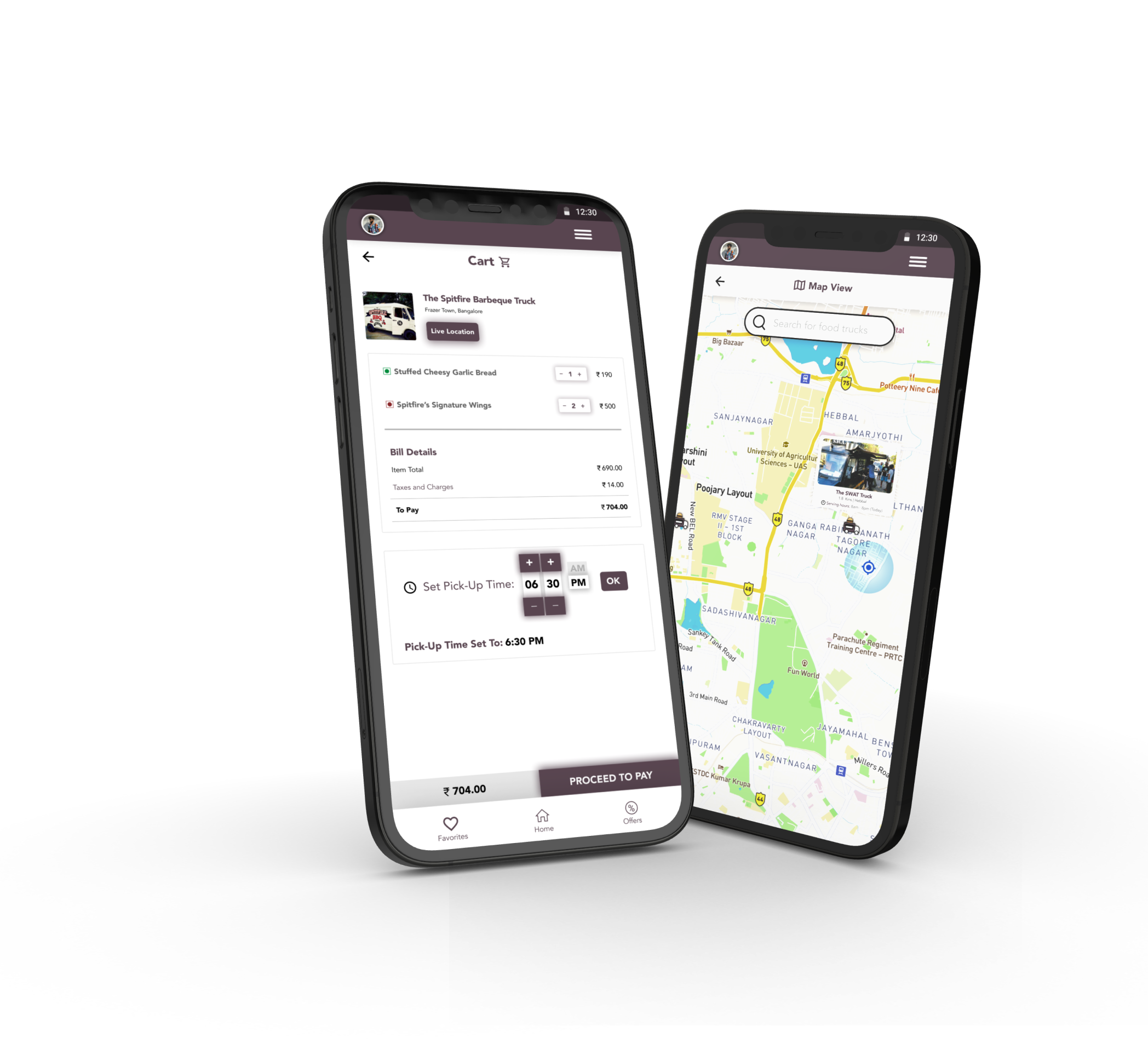
UNDERSTANDING THE USER
User Research
SUMMARY
- I conducted interviews and created empathy maps to understand the users I’m designing for and their needs.
- A primary user group identified through research was millenials, working adults and Senior Citizens who would like to have quick and healthy food on the go.
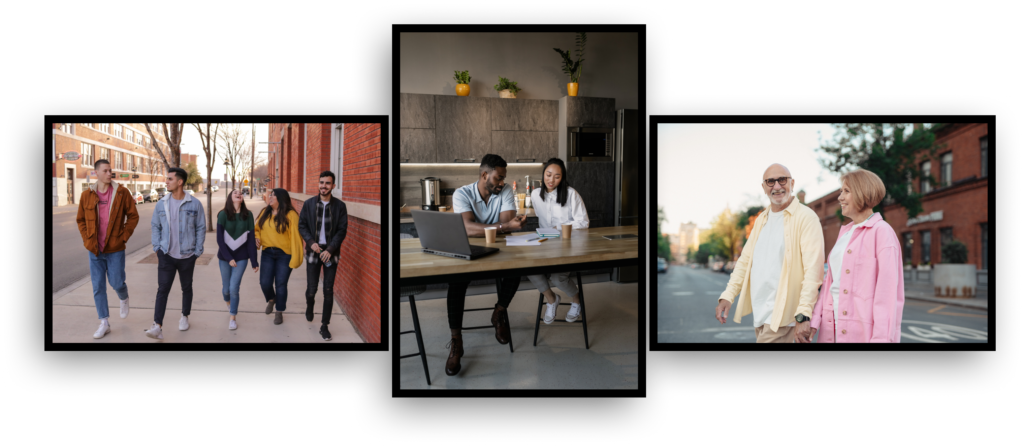
- This user group confirmed initial assumptions about food truck customers that the users weren’t aware of the food truck location and at what time they would be open.
- Other user problems included irregular serving hours and locations which they aren’t aware of, long waiting at the food truck after placing an order, unavailable food items about which the customers are unaware of until they reach the food trucks.
PAIN POINTS

By ordering food from restaurants users end up spending a lot of money on their meals.

Users are fed up of repetitive consumption restaurant food.

Regularly ordering in and having restaurant food is unhealthy to the body.
Users feel that there are no proper online platforms for food trucks in their city.
Working adults are too busy to spend time on meal preparation.
There are a very few food trucks which offer healthy food.
Persona
Catherine is a retired physics professor who needs To know the serving hours of their favorite food trucks because they don’t want to miss the food truck after a tiring morning walk.
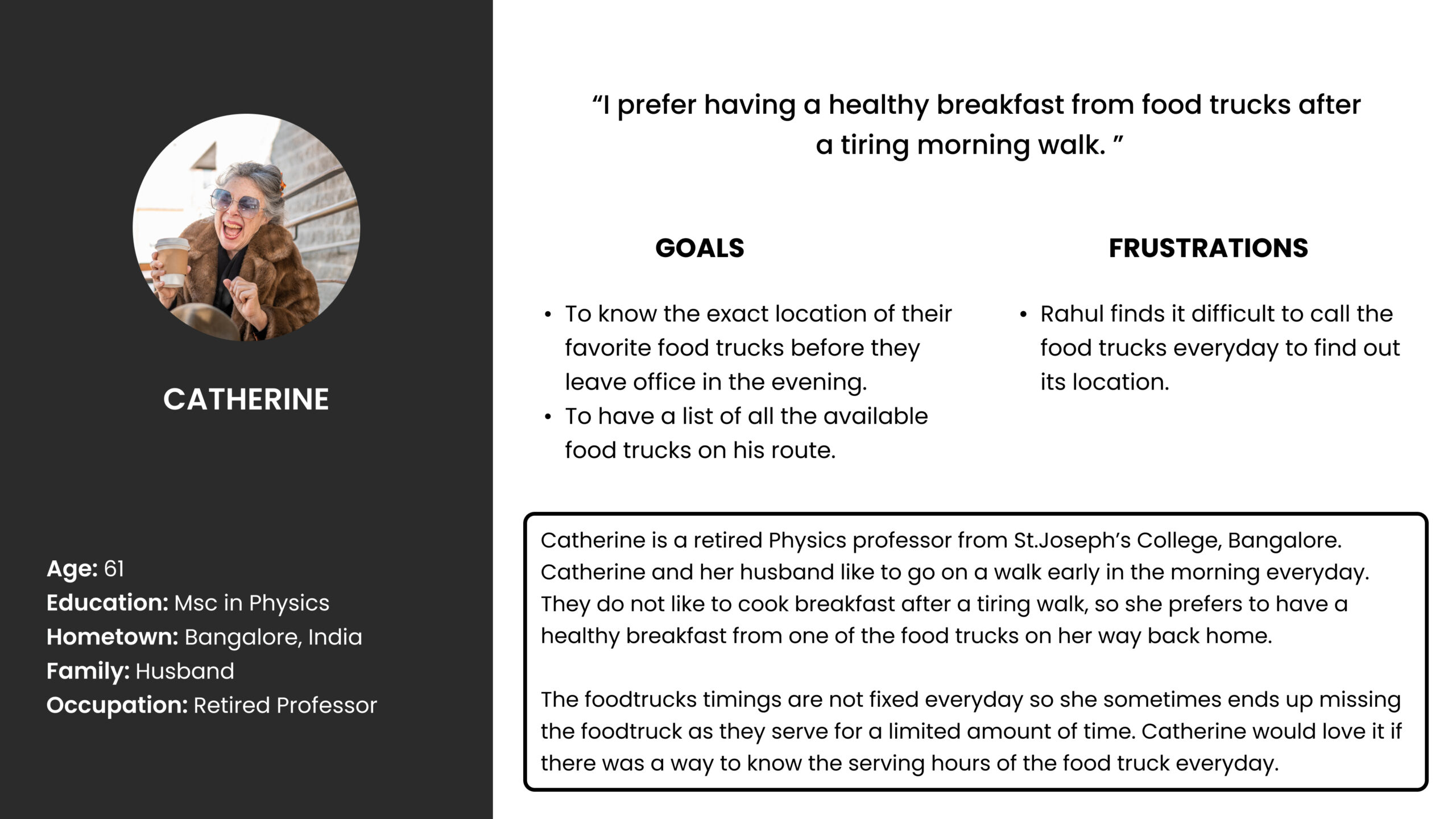
User Journey Map
Mapping Catherine’s user journey revealed how helpful it would be for
users to have a dedicated app with all the important details about the food truck and an option to place an order for pickup.

STARTING THE DESIGN
Paper Wireframes
Taking the time to draft iterations of each screen of the app on paper ensured that the elements that made it to digital wireframes would be well-suited to address user pain points.
For the home screen, I prioritized a quick and easy process to help users Search/locate nearby food trucks.
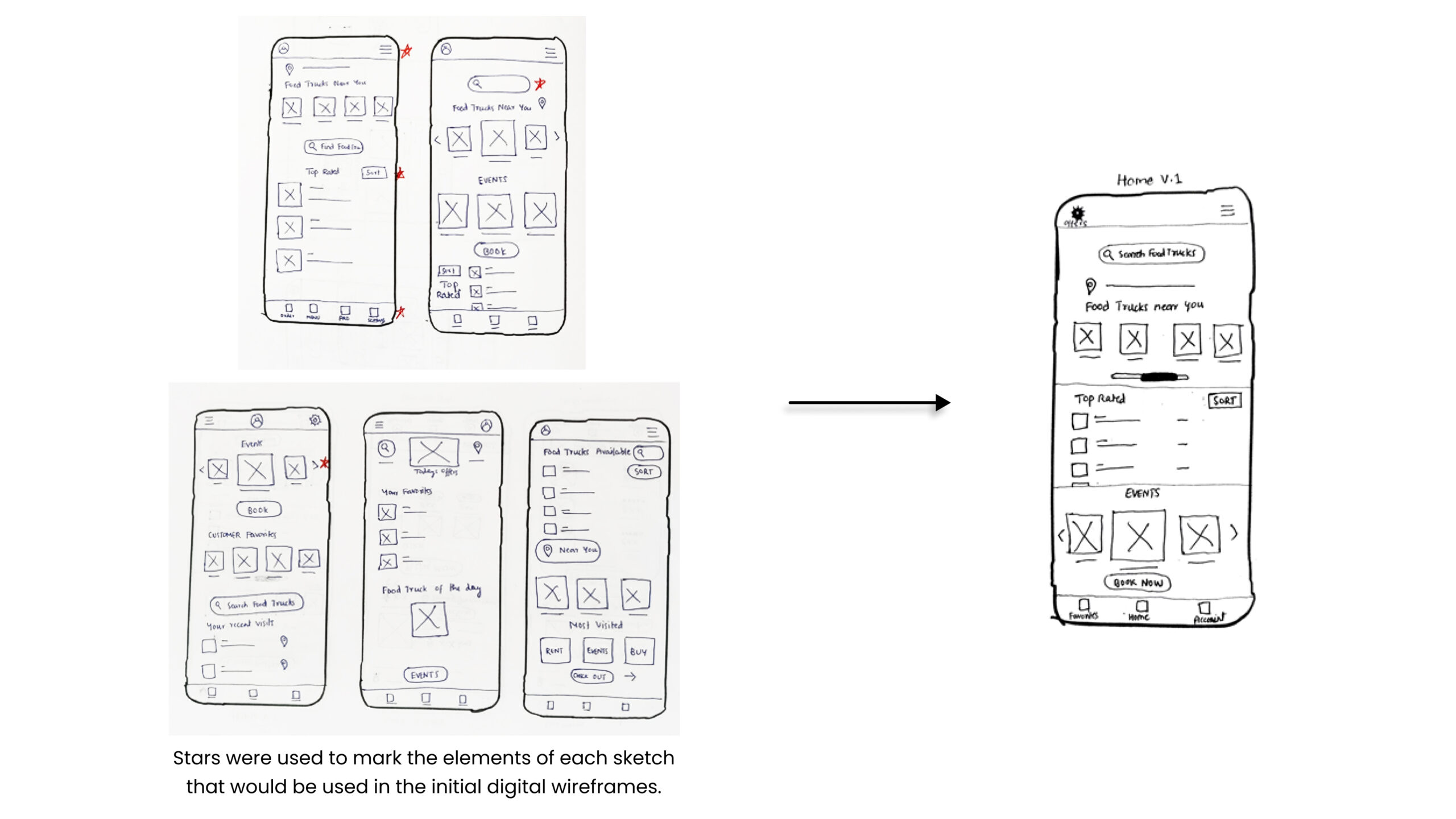
Digital Wireframes
As the initial design phase continued, I made sure to base screen designs on feedback and findings from the user research.
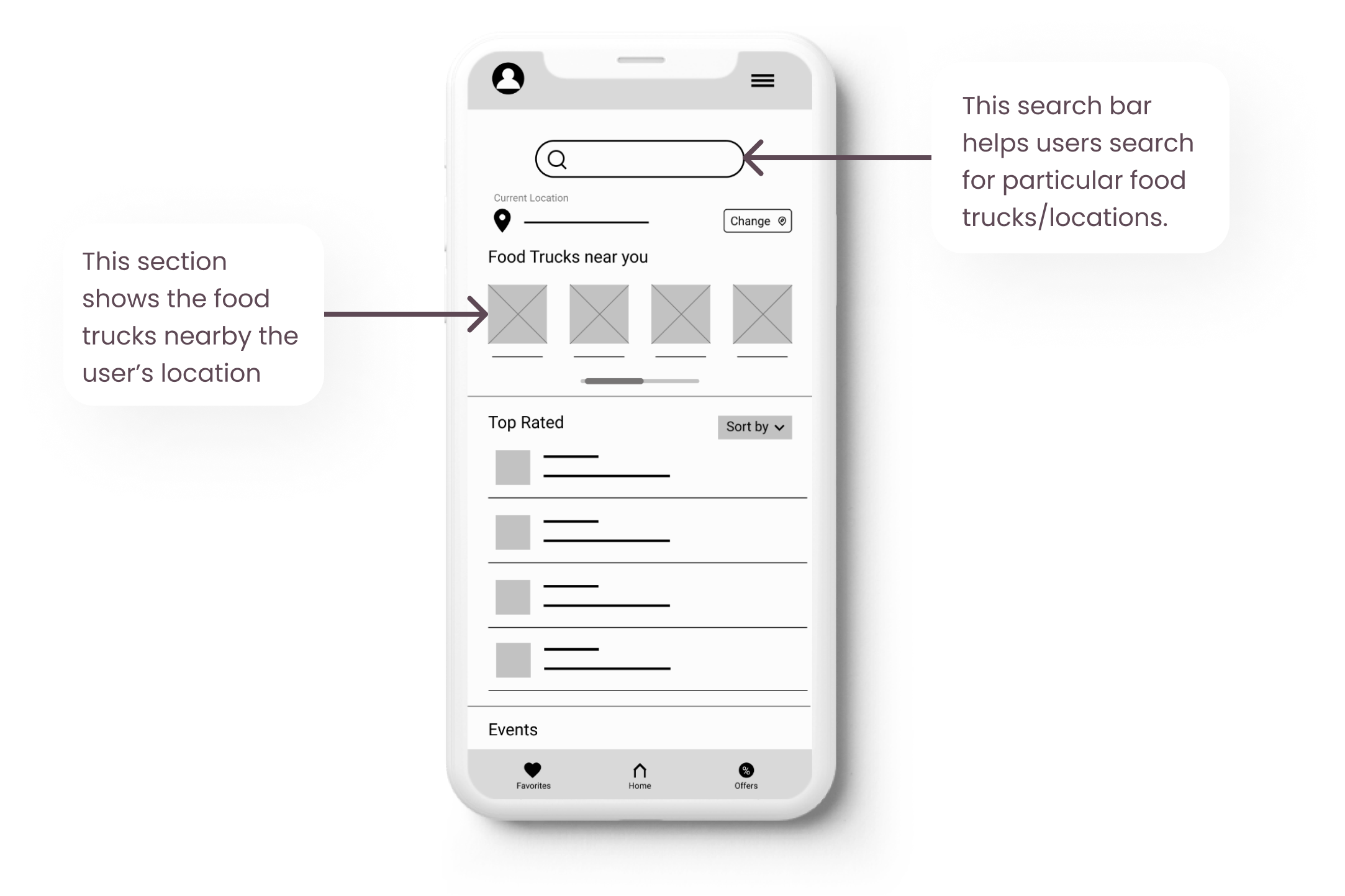
I integrated the important details of the food truck into a single screen so that the users can have a quick access of the necessary information.
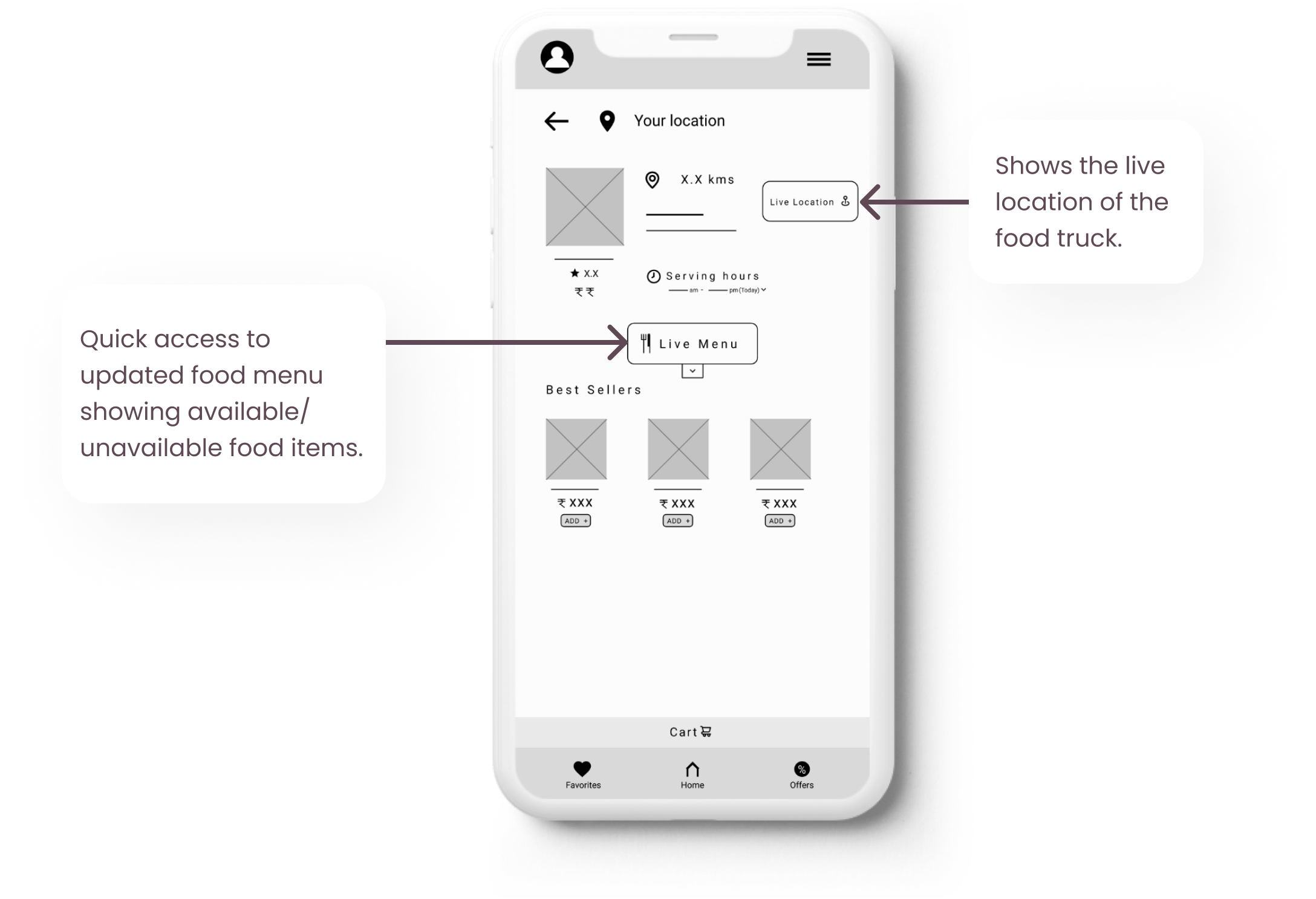
Low-Fidelity Prototype
Using the completed set of digital wireframes, I created a low-fidelity prototype. The primary user flow I connected was checking live location of the food trucks near the user and placing an order for pickup so that the prototype could be used in a usability study.
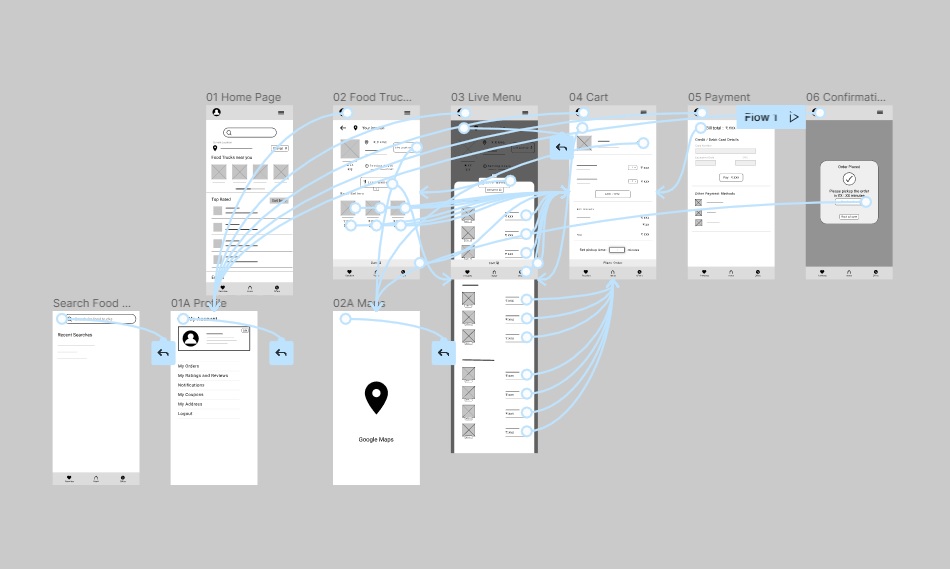
Click below to view Truckato’s Low-Fidelity Prototype
Usability Studies
FINDINGS
I conducted two rounds of usability studies. Findings from the first study helped guide the designs from wireframes to mockups. The second study used a high-fidelity prototype and revealed what aspects of the mockups needed refining.

REFINING THE DESIGN
Mockups
Early designs allowed for some customization, but after the usability studies, I revised the design to add the EDIT button under the common region of current location so users can easily access and edit their current location.

The second usability study revealed confusion in accessing current/previous orders. So, I moved ‘My Orders’ from ‘My Account’ Page to the ‘Hamburger Menu’ where most users expected it to be and renamed it as ‘Your Orders.’
I also added a Map View page for users to see all the food trucks around their location.
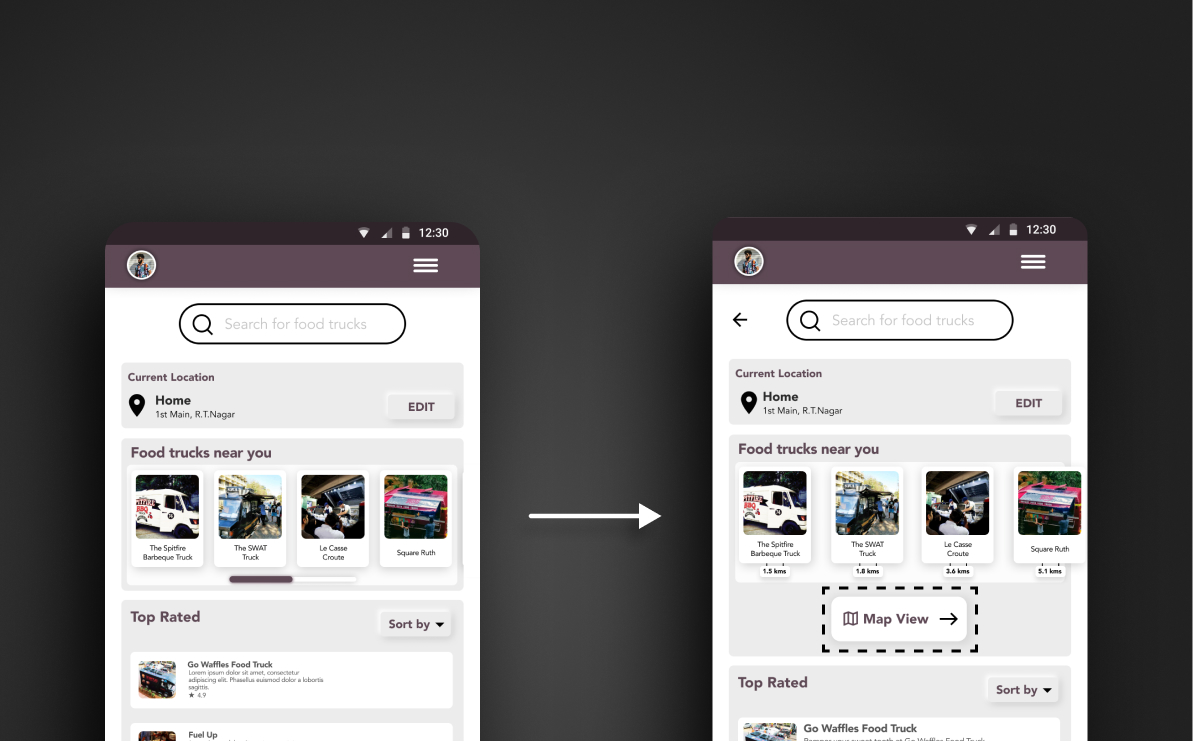

High-Fidelity Prototype
The final high-fidelity prototype presented cleaner user flows for searching food truck nearby, checking live location and placing an order for pickup by setting the pickup time.
Click the expand button on the top right corner to try the prototype in full screen!
Accessability Considerations
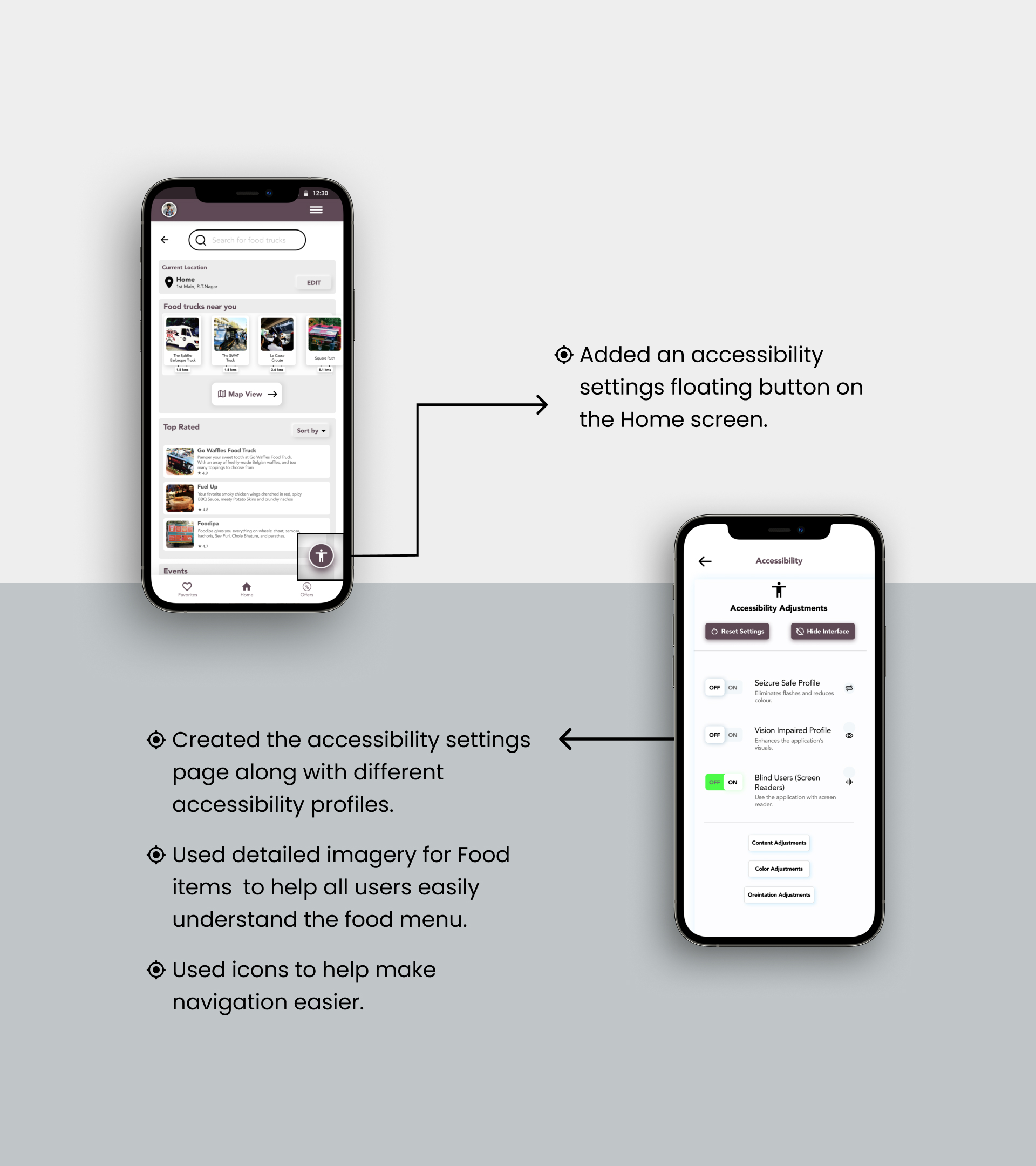
FUTURE ROADMAP
Takeaways

Impact
The app keeps the users engaged because of the easy functionality and pleasing visual designs.
One quote from peer feedback:
“The visuals are pleasing to the eyes and the functionality is easy. I would definitely recommend this app to my friends.”
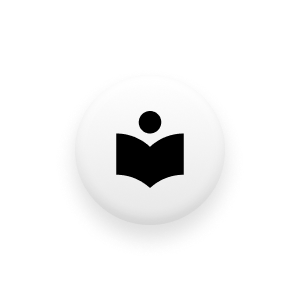
What I learned
While designing the Truckato-Food Truck App, I learned that user feedback and iteration is a key factor for a design to be successful. For every usabilty study round there was always something to learn.
Next Steps
Conduct another round of usability studies to validate whether the pain points users experienced have been effectively addressed.
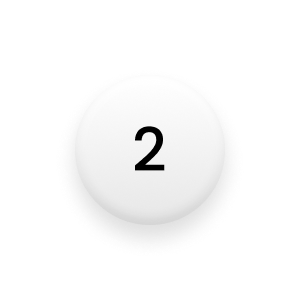
Conduct more user research to determine any new areas of need.